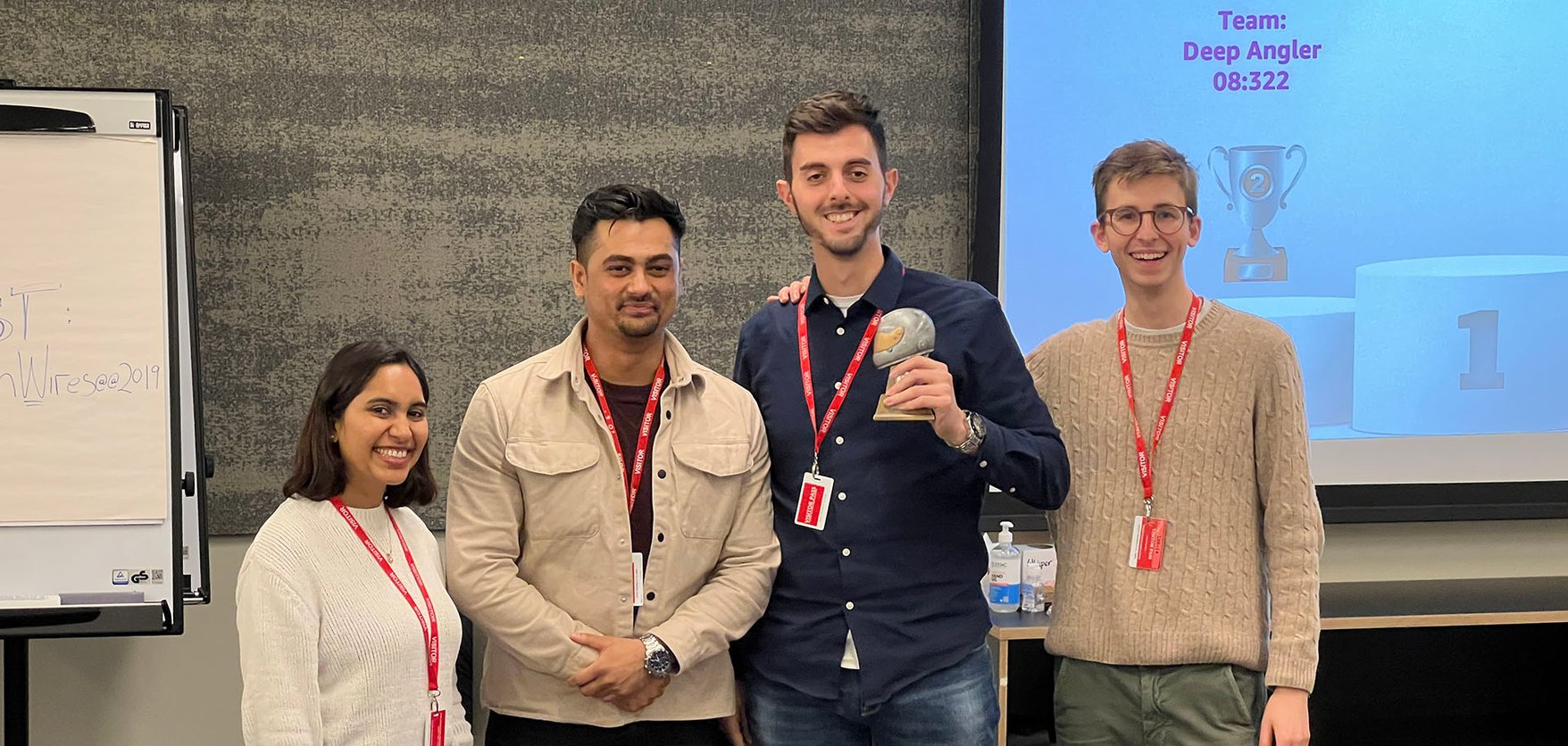Skills and Talent
Closing the Digital Skills Gap: The Power of Gamified Learning
31 May 2023 • 6 min read

Diverse teams learn in diverse ways, so in 2023, is your training toolbox going beyond traditions?
We're big fans of gamified learning here at AND. It's been scientifically proven to boost knowledge absorption and retention; drawing on collaboration, personalisation and fun to boost engagement.
In this blog we’ll discuss some of the gamified learning approaches we’ve undertaken with both our ANDis (our people) and our clients, and share how you can apply what we’ve learned to achieve better learning outcomes for yourself.
What is gamified learning?
Gamification involves incorporating game elements and mechanics into non-game contexts such as training sessions, workshops, or even Hackathons. Whilst ANDis are always keen to upskill, we understand that not every organisation has a culture of continual learning at their core. With that in mind, gamified learning can be a really powerful tool in engaging members of your organisation who find it challenging to regularly undertake more traditional, passive methods of learning.
What are the 5 main benefits of gamified learning?
- Increased engagement: Games are inherently captivating, this tends to enhance learning outcomes as it engages participants' sense of enjoyment and curiosity, allowing them to become immersed in the experience without necessarily focussing on the educational aspects. Through the introduction of competitive or collaborative elements, it can become easier to engage with learners who find solo learning difficult or unenjoyable.
- Improved motivation: When we’re motivated it’s much easier for us to absorb and retain new information. Gamification aids in this by tapping into both intrinsic (satisfaction derived from a game-like experience itself) and extrinsic (rewards, recognition, or social status) motivators, encouraging learners to invest time and effort in their education pursuits.
- Skills application: Lots of learners struggle with limited retention and application of knowledge when they try and learn using traditional, passive methods. Gamification can help to overcome this by introducing interactive elements that require learners to think critically, make decisions, and solve problems. This active, hands-on approach encourages participants to apply theoretical knowledge to practical situations. Not only does this allow for deeper understanding, it also allows participants to practise decision making related to real-world challenges, in a safe and supportive environment.
- Personalised learning: With gamification, challenges can be adapted and learning pathways customised to suit the preferences, pace, and learning style of individual participants. Through progress and performance-tracking; the difficulty, content, and feedback can be dynamically adjusted in real-time to better meet individual needs. This allows learners to explore topics at their own pace and receive targeted, relevant guidance and support. This serves to improve engagement and learning outcomes as you can ensure that learners are neither bored nor overwhelmed.
- Iterative learning: When feedback is provided during a gamified learning experience, it allows participants to immediately understand the consequences of their actions. This in turn creates an immediate feedback loop wherein they can begin to make adjustments, learn from mistakes and improve their performance. This is an iterative learning process that ensures learners gain a deeper understanding of the subject matter through experiencing cause-and-effect relationships first-hand.
What are the top 5 things I can do to create effective gamified learning experiences?
- Get active: Learning outcomes can be improved when learners have to make active choices and decisions in order to progress. Consider how you can integrate active elements into your learning experience - this could take the form of physical or mental challenges that require critical thinking and the application of knowledge accumulated so far.
- Create a sense of achievement: Earning points, advancing up the leaderboard, gaining levels and unlocking badges are all mechanisms you can use to enhance learning outcomes. A sense of achievement and continual progress are powerful motivators that help to keep learners engaged for longer periods of time.
- Provide feedback: Immediate feedback helps learners to draw a clear link between the cause and effect of their actions and decisions. This can act as an extrinsic motivator by providing positive recognition, both from facilitators and from peers participating in the experience.
- Compete & collaborate: Every learner is different, but there is tremendous value in offering learning experiences that are both competitive and collaborative. A competitive approach to learning helps participants by introducing a degree of friendly challenge that can be motivating, whilst a collaborative approach provides a forum for collective discussion, experimentation, and problem-solving.
- Create a safe learning environment: Wherever there’s an element of competition, it’s important to put some guardrails in place. Learners will enjoy themselves more and experience better learning outcomes if psychological safety is ensured. After all, any competition is all in the name of fun and there are no negative consequences to coming in last, everyone’s learning journey is a personal one and gamified learning should always be free from judgement. In practice this could mean taking care to foster an environment where everyone feels comfortable and supported in sharing their opinions. It’s also important that participants are respectful of each other’s feelings when engaging in competitive activities, as a facilitator you should take the time to set clear expectations.
How do we use gamified learning to improve learning outcomes for our ANDis and clients?
We’ve found great success in adopting a gamified approach to learning when we’ve worked in partnership with AWS. Together, we’ve hosted AWS GameDay and AWS DeepRacer sessions combining interactive, gamified elements with hands-on learning, to help participants expand their theoretical and practical knowledge of cloud computing and Artificial Intelligence/Machine Learning (AI/ML).
In practice, this means ANDis and clients coming together to solve real-world problems in a fun, competitive, team-based environment. Recent examples include:
Upskilling people from Nationwide’s Data & Analytics team at our 'Microservices Magic' AWS GameDay. We taught them about operating a microservices architecture through stress testing, maintaining high levels of availability, and employing the practice of continuous improvement/continuous delivery. This gave them lots of practical experience in effectively utilising and applying AWS technologies such as Lambda, ECS (Elastic Container Service), Beanstalk, ASG (Auto Scaling Groups), FIS (Fault Injection Simulator), and ELB (Elastic Load Balancing). Despite covering technical subjects, the feedback from learners shows that it was by no means dry or boring.
“It was a fun event and I felt like I learnt a lot about AWS.”
Upskilling our own ANDis as well as clients at an AWS DeepRacer event - this involved teams using AI/ML to race a miniature car round a track in the fastest time to pip the competition to the podium. This format was especially effective as it took a deeply technical subject matter and broke it down into practical concepts that could be more easily understood, then applied in real-time to help reinforce the desired learning outcomes. Feedback from learners speaks for itself in this instance.
“When people are rewarded for learning, psychologically it makes people want to learn, they're getting rounds of applause here for learning.”
How do I learn more?
We’re life-long learners at AND, so be sure to check out our blog for lots of great articles that will help you close your own digital skills gap in bite-sized chunks.
If you’d like to have a chat about how we can work together to close your organisation’s digital skills gap, pop your details into the form and we’ll be in touch.



.png?width=564&height=348&name=Podcast%20assets_Linkedin%20copy%206%20(1).png)